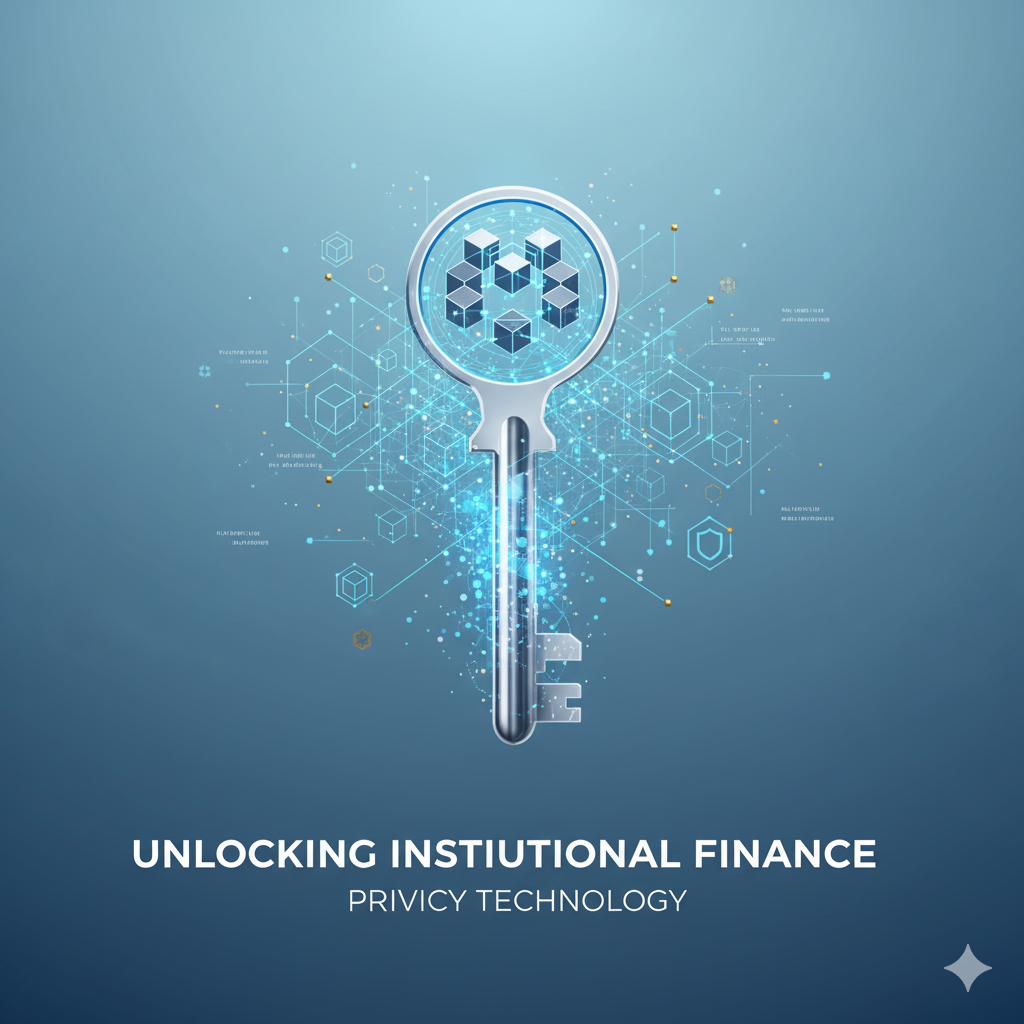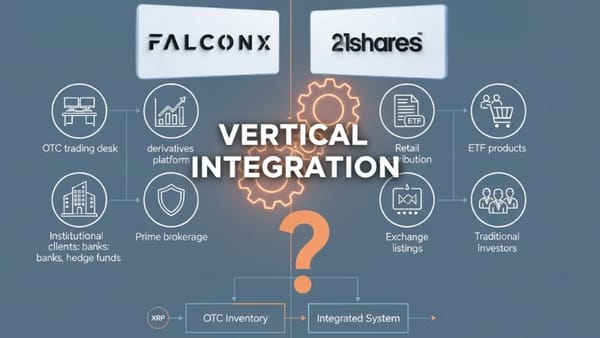Ripple Unveils Privacy Roadmap to Make XRP Ledger Institutional Standard
Ripple unveils zero-knowledge proof roadmap to make XRP Ledger the institutional blockchain standard. Private, compliant transactions launch within 12 months; confidential tokens for RWAs arrive 2026. Could trillions in assets finally move on-chain?

Ripple's Senior Director of Engineering J. Ayo Akinyele has outlined an ambitious privacy-first roadmap designed to position the XRP Ledger (XRPL) as the blockchain of choice for institutional finance. In an official blog post published October 2, 2025, Akinyele revealed that zero-knowledge proof (ZKP) technology will enable financial institutions to conduct private, compliant transactions while maintaining regulatory transparency—addressing what he calls the fundamental paradox that "finance cannot function without confidentiality, yet blockchains are built on transparency."
The announcement comes as institutional decentralized finance reaches a pivotal milestone, with transaction volumes surpassing $1 billion and XRPL breaking into the top 10 blockchains for real-world asset (RWA) tokenization. Akinyele, a cryptographer with a Ph.D. from Johns Hopkins University and over a decade of privacy-focused blockchain research, argues that without native confidentiality features, institutions will never move core financial workflows onto public ledgers.
Privacy Meets Compliance Through Advanced Cryptography
At the heart of Ripple's strategy lies zero-knowledge proof technology, which allows one party to prove a statement is true without revealing the underlying data. For institutional users, this means proving Know Your Customer (KYC) compliance without broadcasting client identities across the entire network, or demonstrating proof of reserves without exposing all wallet data to competitors.
"Without privacy, financial institutions cannot safely use public ledgers for core workflows," Akinyele stated. "Without accountability, regulators cannot sign off. With programmable privacy, we can have both."
The roadmap unfolds in two distinct phases. Over the next 12 months, Ripple engineers will integrate ZKPs directly into XRPL to enable private transactions while improving network scalability. According to CoinDesk's coverage, this implementation will also incorporate trusted execution environments (TEEs) for fair transaction ordering to prevent front-running and MEV (miner extractable value) attacks that have plagued other blockchain networks.
Confidential Tokens Set for 2026 Launch
The second milestone targets 2026 with the introduction of Confidential Multi-Purpose Tokens (MPTs). These privacy-preserving tokens will enable institutions to tokenize real-world assets—including real estate, commodities, and securities—while keeping sensitive ownership details and transaction amounts encrypted. The confidential MPT framework builds upon the standard MPT protocol that launched on XRPL mainnet October 1, 2025, which already enables complex financial products to exist natively on the ledger.
In mid-September, Ripple engineers Murat Cenk and Aanchal Malhotra opened an XRPL Standards discussion proposing to encrypt balances and transfers using EC-ElGamal cryptography combined with zero-knowledge proofs. This technical foundation allows verifiers to confirm transaction correctness without accessing the underlying values—precisely the infrastructure that heavily regulated issuers require to transition from private ledgers to public blockchain rails.
XRP and XRPL: Positioned for Institutional Trillions
Akinyele positioned XRPL as "uniquely positioned to bridge many trillions of dollars in assets set to move on-chain over the coming decade," citing the ledger's decade-long operational track record, built-in decentralized exchange (DEX), escrow functionality, and payment channels as finance-oriented primitives already embedded at the protocol level.
Beyond privacy enhancements, Ripple is preparing a native lending protocol for inclusion in XRPL Version 3.0.0, which will enable decentralized credit and liquidity pooling directly on the ledger. This positions XRP as a utility token for collateral management and settlement in institutional DeFi applications.
Implications for XRP Holders and Market Adoption
For XRP holders, these developments signal a strategic shift toward enterprise-grade infrastructure that could dramatically expand the token's utility beyond cross-border payments. If Ripple successfully delivers on its privacy roadmap, XRPL could capture significant market share in the rapidly growing tokenized asset sector, which analysts project will reach multi-trillion dollar valuations by the end of the decade.
The privacy upgrade directly addresses the primary friction point preventing traditional financial institutions from adopting public blockchain infrastructure. By enabling institutions to protect sensitive data while maintaining regulatory compliance, Ripple is positioning XRP Ledger to compete with both private permissioned ledgers and privacy-focused blockchain networks.
However, the technical complexity of implementing production-ready zero-knowledge systems at scale should not be underestimated. Akinyele acknowledged this challenge, noting his previous work on zkChannels revealed that "performance and usability matter as much as security." The team is reportedly prototyping ZKP integrations with research and compliance teams alongside partners such as Hidden Road.
Key Takeaways
Ripple's privacy-first roadmap represents a calculated bet that institutional adoption hinges on solving blockchain's transparency-versus-confidentiality paradox. With zero-knowledge proofs enabling private transactions over the next 12 months and confidential tokens launching in 2026, XRPL is positioning itself as infrastructure for the next generation of regulated digital finance. For XRP, success would mean transformation from a payments network into a comprehensive platform for tokenized assets, lending, and institutional DeFi—potentially unlocking trillions in institutional capital currently sitting on the sidelines of public blockchain adoption.
Sources
- Privacy, Scale, and the Future of Blockchain Finance - Ripple Insights (Official Ripple Blog, October 2, 2025)
- Ripple Engineer Says XRP Ledger Aims to Be Institutions' First Choice for Innovation and Trust - CoinDesk (October 3, 2025)
- Ripple Maps XRP Ledger's Future: 'No Privacy, No Adoption' - Bitcoinist (October 3, 2025)
- Ripple Engineer Says XRPL Now Targets Institutions with Privacy-First Innovation - Cryptopolitan (October 4, 2025)
- Ripple Announces Major Privacy Upgrade For XRP Ledger - Bitcoinist (October 6, 2025)
- Ripple Director Unveils 2026 Privacy Roadmap for XRP Ledger: What's Next? - U.Today (October 3, 2025)
- XRP Ledger - Official Documentation
- zkChannels for Bitcoin - Bolt Labs Medium
DISCLAIMER: This newsletter is for informational purposes only and does not constitute investment advice, advertising, or a recommendation to buy, sell, or hold any securities. This content is not sponsored by or affiliated with any of the mentioned entities. Investments in cryptocurrencies or other financial assets carry significant risks, including the potential for total loss, extreme volatility, and regulatory uncertainty. Past performance is not indicative of future results. Always consult a qualified financial professional and conduct thorough research before making any investment decisions.



